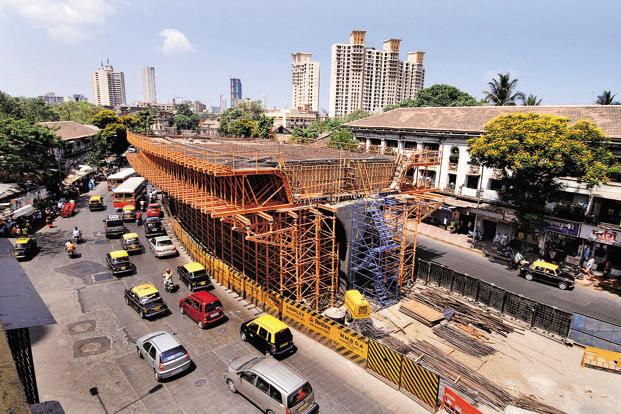
Hyderabad: Over the next five years, India will require as much as Rs.31 trillion for infrastructure development, around 70% of which will go into power, roads and urban infrastructure segments, according to a white paper released by Associated Chambers of Commerce and Industry of India and Crisil Ratings.
“To provide uninterrupted power supply to homes and factories, and improve roads, telecom, transport and other urban infrastructure, the country would need an investment of more than Rs 6 lakh crore of every year or around Rs 1,700 crore every day from April 2015 to March 2020,” the white paper said.
Even though banks have faced severe stress in lending to long-term projects, bank debt is likely to be the most used funding avenue by the sector, followed by bond issuances and external commercial borrowings. Two-thirds of the investments would come from debt, half of which will be through banks. Rs.7.5 trillion, 35% of the total, could be raised through bonds, and Rs.3.2 trillion, or 15%, via ECBs.
Bank lending towards the sector has grown 28% over the past decade, which is higher than their overall credit growth. The challenge in such exposure to infrastructure sector is the risks of an asset-liability mismatch (ALM) given that the infrastructure project loans have long tenures while bank deposits mature in short term.
Banks and financial institutions have lent Rs.75,000 crore to the power sector for projects of 16,000 MW, as on March this year. “While some have been boxed into a corner after aggressive bidding, others are facing cost overruns or gas supply issues. These projects don’t have strong sponsor company support and are not expected to turn viable in the long run,” Crisil said, adding this could lead to high accretion of non-performing assets from these accounts in the medium term.
Not just power sector, but the build-operate-transfer projects in the road segment of about 7500km under the NHAI are under risk, as half of the projects are not complete and have high cost over-runs now.
The under-construction projects require equity and cost overrun support of around Rs.28,500 crore over the next two years. Of this, about Rs.16,000 crore could come from the internal accruals of sponsors and sale of stake at the SPV level. That leaves a significant shortfall of Rs.12,500 crore,” the white paper said.
The ideal mode for financing infrastructure projects will be for banks to focus on funding up to the pre-commissioning stage of projects, the paper said. Later, when the project has attained stability after commissioning, banks can look at refinancing the debt through bonds to long-term investors.
“Such refinancing will free up considerable quantum of bank funds and enable these funds to be deployed in new infrastructure projects. While this financing model will allow banks to address their ALMs better, bond investors will also get good-quality, long-term assets with stable cash flows,” the white paper said.
Also, such financing, where banks lend up to the commissioning stage, can bring respite to developers in the form of reduced costs and fixed rates of interest. This would require banks to adopt a stronger risk-based pricing model for project loans in tandem with the risk associated at different stages of the project.